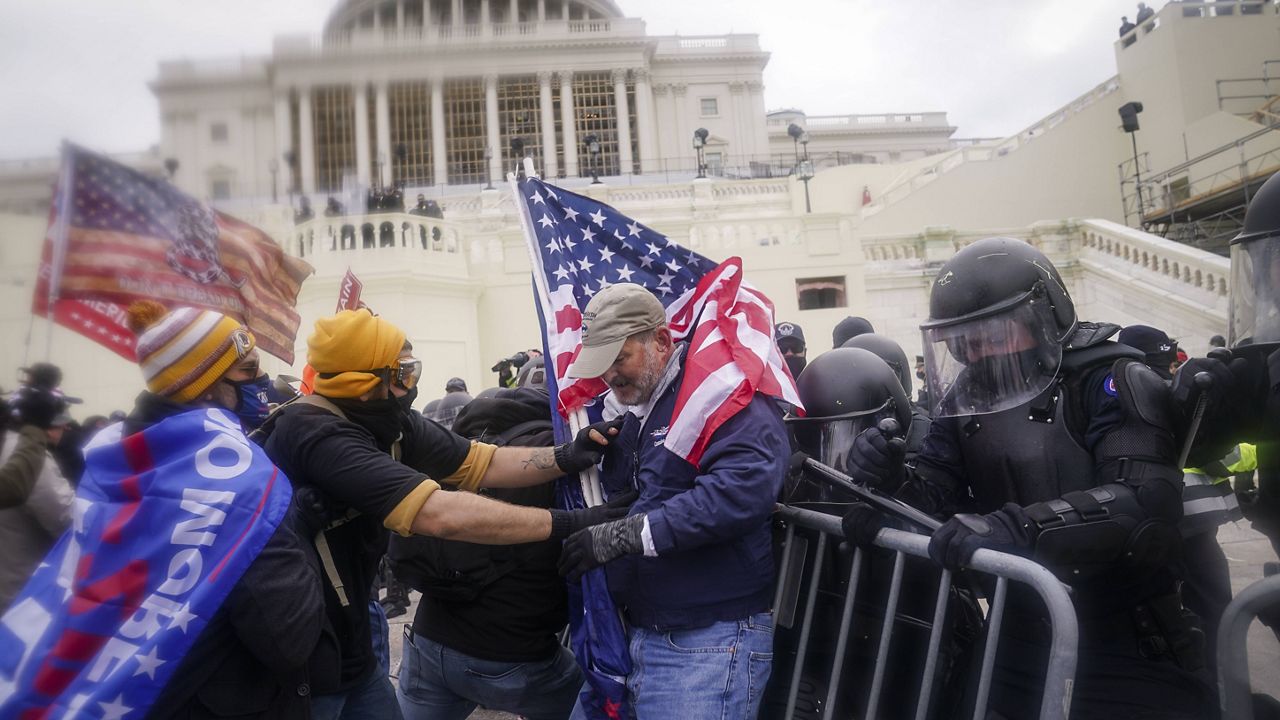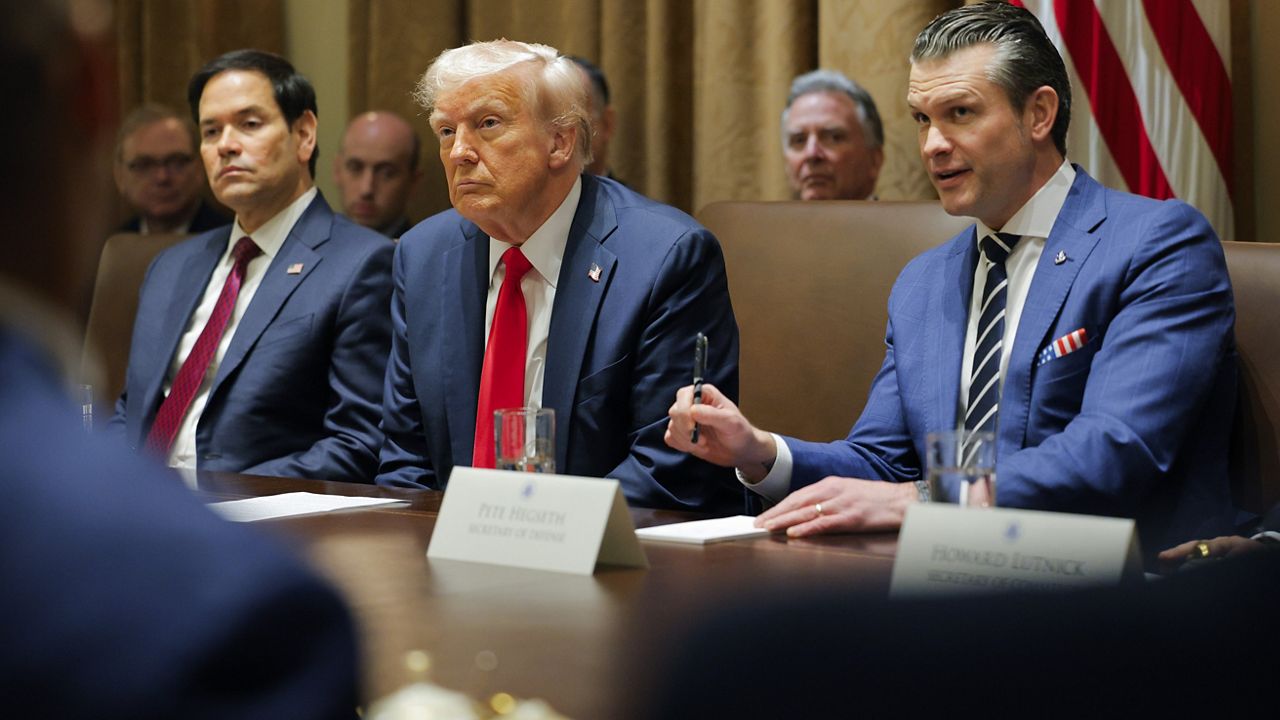One hundred days ago, the world watched in horror as a violent mob stormed the United States Capitol building while lawmakers met to certify the results of the 2020 presidential election.
Hundreds of supporters of then-President Donald Trump descended on the Capitol while then-Vice President Mike Pence, hundreds of lawmakers, Congressional staff members, employees of the Capitol and reporters and journalists were inside.
The rioters smashed windows, kicked in doors, stole numerous items, including documents, laptops, iPads, notes and even House Speaker Nancy Pelosi’s lectern.
One person was infamously photographed with their feet propped up on Pelosi’s desk.
The dramatic scenes played out on television and on social media, thanks to reports from journalists and photographers who were still in the building at the time of the riot. The Senate parliamentarian’s office ransacked, with papers strewn across the floor. A man carrying a Confederate flag — a symbol of the Civil War, the deadliest war in American history — through the halls of the Capitol.
The riot left five people dead — including Capitol Police Officer Brian Sicknick. Two other Capitol Police officers who defended the Capitol during the riot died by suicide in the aftermath of the horrific assault on the seat of democracy.
If you or someone you know needs help, please call the National Suicide Prevention Lifeline at 800-273-8255, or text HOME to 741741 for support from the Crisis Text Line.
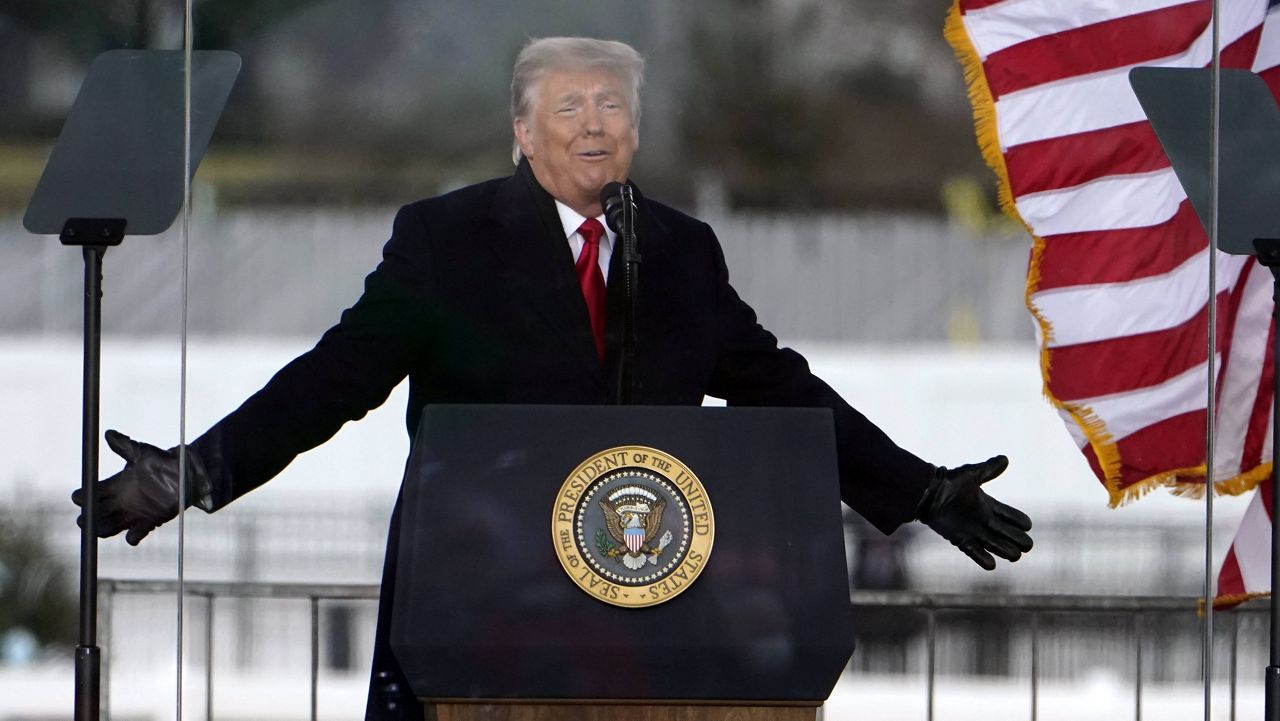
The morning of Jan. 6, crowds gathered at the Ellipse, the oval-shaped park south of the White House, to hear the soon-to-be outgoing president speak. According to plans from the Pentagon, acting defense secretary Christopher Miller would only be notified if the crowd grew past 20,000 people — estimates peg the crowd at around 10,000.
Trump, in his fiery speech, told the crowd that his vice president needed to “come through for us” and overturn the results of the election, and said “it is up to Congress to confront this egregious assault on our democracy.”
“We're going to walk down to the Capitol, and we're going to cheer on our brave senators and congressmen and women, and we're probably not going to be cheering so much for some of them,” Trump said next, just before noon. “Because you'll never take back our country with weakness. You have to show strength and you have to be strong.”
Despite Trump saying he would be with the crowd at the Capitol, he returned to the White House in his motorcade. After 1:00 p.m. that day, Trump’s supporters marched to the Capitol.
Some protesters immediately busted through barriers and got violent with police officers. Just before 2:00 p.m., former Capitol Police chief Steven Sund called Maj. Gen. William Walker, commanding general of the D.C. National Guard, for assistance.
According to a tally from the Washington Post, Metropolitan Police Commander Robert Glover called for backup at least 17 times in 78 minutes on Jan. 6.
Shortly after 2 p.m., the first rioters breached the Capitol, sending the building into lockdown mode and lawmakers and staff fleeing for the lives.
Just after 3 p.m., then-secretary of the Army Ryan McCarthy issued “verbal approval” to activate 1,100 National Guard troops to support D.C. police — but the first contingent of armed Guard members, dressed in riot gear, did not arrive at the Capitol until after 5:30 p.m.
Trump finally broke his silence at 4:17 p.m., telling his followers to “go home and go in peace.”
The building was not declared secure until 8:00 p.m.
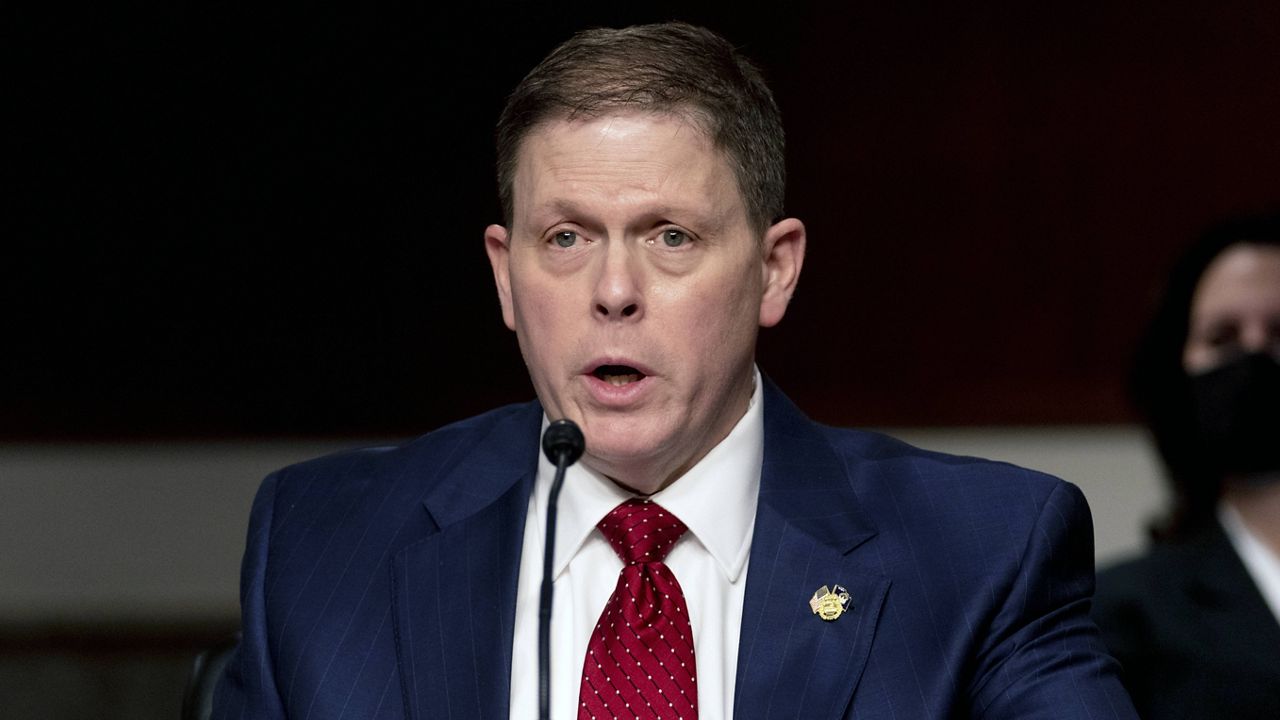
Chilling details began to emerge in the days and weeks after the event.
During Trump’s second impeachment hearings for his role in the insurrection, which took place after he left office, new surveillance video revealed just how close lawmakers came to disaster — in part because of the heroic actions of the police officers who put their lives on the line to protect the Capitol.
“Officer Eugene Goodman's heroic actions on Jan 6th saved countless lives & prevented a violent mob from breaching the Senate Chamber,” Rep. Frank Pallone (D-NJ) wrote of footage that showed Officer Eugene Goodman telling Sen. Mitt Romney (R-UT) to turn away from an oncoming mob of rioters. “We all owe him a debt of gratitude.”
Video from the impeachment proceedings also show just how close rioters came to Vice President Pence. At 2:26 p.m., Pence was seen being evacuated down a flight of stairs. At 2:24 p.m., Trump wrote on Twitter that Pence “didn’t have the courage to do what should have been done.” Rioters, some of whom chanted at one point “Hang Mike Pence!”, got within 100 feet of his location, according to the Washington Post.
Equally chilling are the stories of security failures leading up to the riot. A stunning inspector general report from the Capitol Police’s internal watchdog — recently obtained by The Associated Press — showed that leaders overlooked or ignored intelligence reports that showed violent threats against lawmakers.
One post included in the memo said “Get violent ... Stop calling this a march, or rally, or a protest. Go there ready for war. We get our President or we die. NOTHING else will achieve this goal.”
Department leaders attempted to downplay intelligence reports. “None of the intelligence we received predicted what actually occurred,” Sund told Congress in February. “These criminals came prepared for war.”
The report also found that department equipment was expired or defective — including riot shields that were improperly stored, which shattered on impact — and department leaders ordered a crowd-control unit to not deploy powerful non-lethal weapons, including stun grenades.
“Heavier less-lethal weapons,” Michael Bolton, the Capitol Police’s inspector general, wrote, “were not used that day because of orders from leadership.”
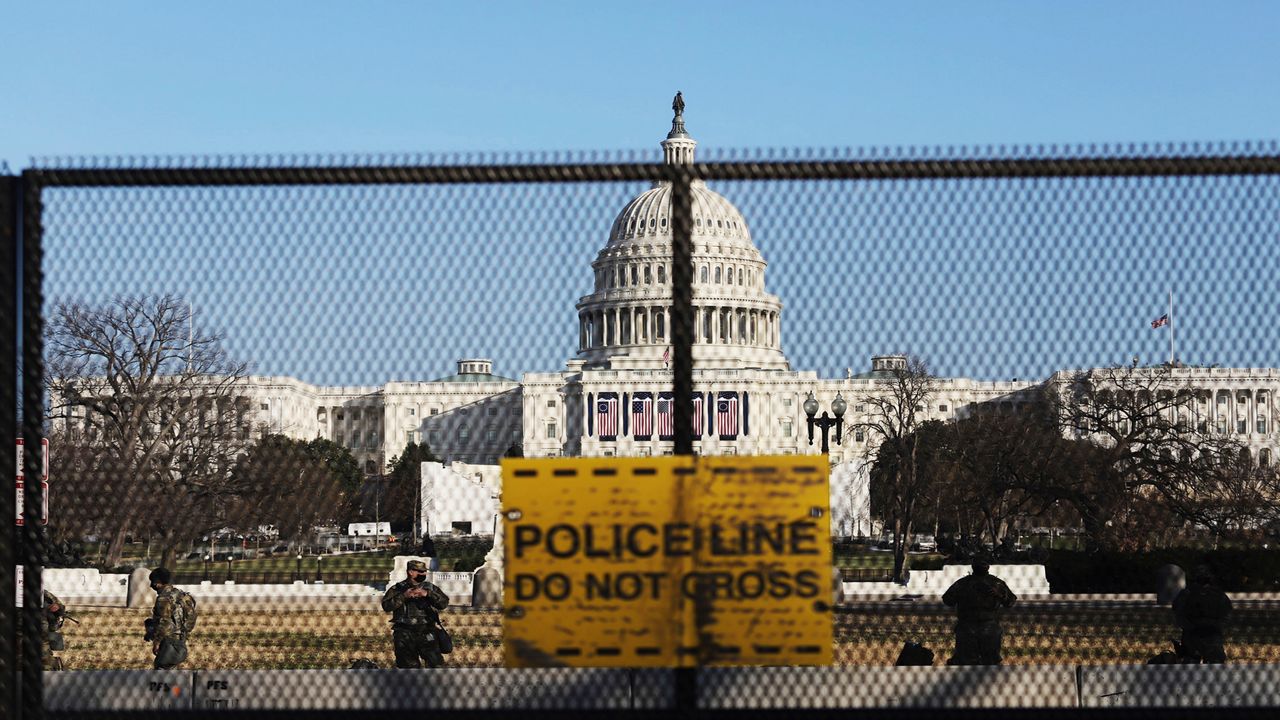
Over 400 defendants in 45 states have been charged in connection to the insurrection. A founding member of the Oath Keepers agreed Friday to plead guilty and cooperate with the government, the first defendant to flip.
Congress is still trying to figure out how to move forward months after the attack, though emotions are still high on Capitol Hill — especially in the aftermath of an April 2 attack in which a man rammed his car into two Capitol Police officers, killing one before being fatally shot by other officers.
Lawmakers are trying to figure out what to do about the fencing surrounding the Capitol that was erected in the immediate aftermath of the attack.
Republicans and Democrats both have bristled at keeping the fencing up, but police and other security leaders say they need to continue their reviews and ensure the Capitol is safe before taking the fencing down.
Speaker Pelosi said in a recent interview with USA Today that she will soon introduce a bill to improve Capitol security, including possibly retractable fencing that can be used when there are security threats, as well as additional spending to improve security around the Capitol.
She added that she will move to establish a select committee to investigate the Capitol riot if efforts to create a 9/11-type commission fail.
“The one thing among our members that is consistent is – we must find the truth," she said of the attack.
Morale is low among the Capitol Police in the aftermath of the Jan. 6 and April 2 attacks, the latter of which saw Officer William “Billy” Evans killed.
“This has been a very, very traumatic time for this force,” Rep. Tim Ryan (D-OH) said after Evans’ death.
In a security report commissioned by Pelosi, retired Army Lt. Gen. Russel Honoré recommended the Capitol Police hire hundreds more officers and improve training and intelligence capabilities.
One change that seems likely in the coming months is a restructuring of the security command in the Capitol. Lawmakers in both parties have said they’d like to see changes to the board to give the Capitol Police chief more power.
The Senate Rules Committee and the Senate Homeland Security and Governmental Affairs Committee are conducting interviews about the insurrection and are expected to issue a joint report with recommendations by the end of April, Senate Rules Committee Chair Amy Klobuchar (D-MN) said.
But no 9/11-style commission has yet been established. The former president was acquitted in his impeachment trial by the Senate, and is still seen as the de-facto leader of the Republican Party. Investigations and charges are still ongoing, and the FBI is still seeking the public's help in identifying suspects from the riot.
And the events of the day still burn brightly in peoples’ minds.
“I think of it all the time,” Sen. Majority Leader Chuck Schumer (D-NY) told NBC News. “And I think about the enormous responsibility on the shoulders of our Democratic caucus. There's a lot of anger in the land.”
Pelosi said she will “never forgive” the rioters "for the trauma that they caused to the staff and the members.”
But the California Democrat expressed optimism, telling NBC News that the rioters “failed.”
“They failed,” she said. “They failed in stopping the certification of a president of the United States. And they did so because members had the courage to come back.”
The Associated Press contributed to this report.




